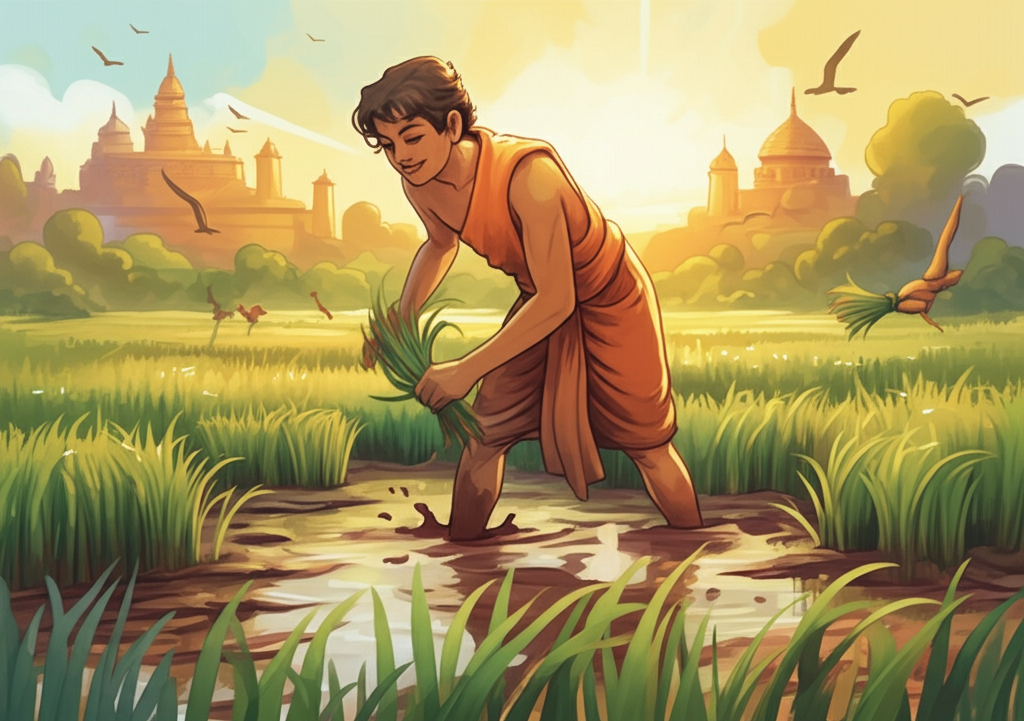
A long, long time ago, when a king named Brahma-datta ruled in Benares, the future Buddha was born into a farmer’s family. When he grew up, he worked hard, planting and taking care of the land.
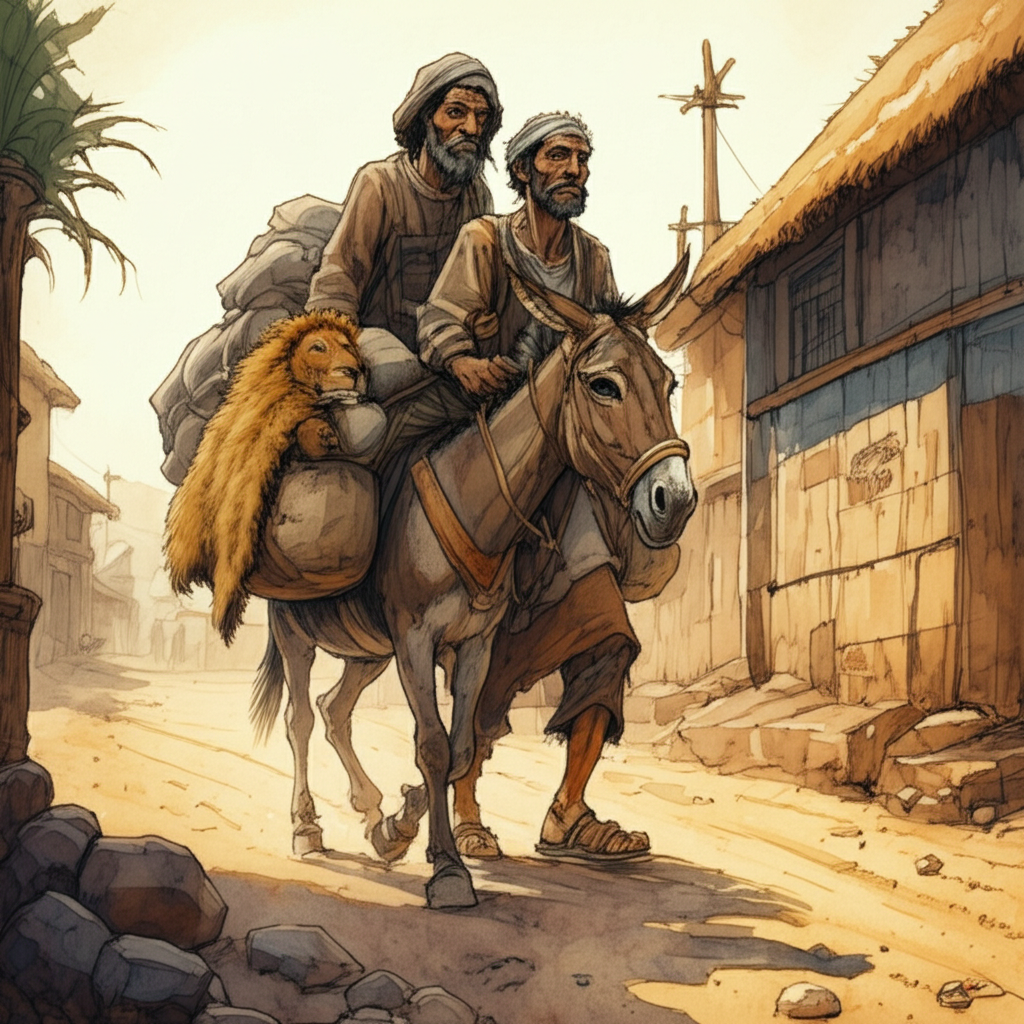
Around that time, a traveling salesman went from town to town. He had a donkey that carried all his goods.
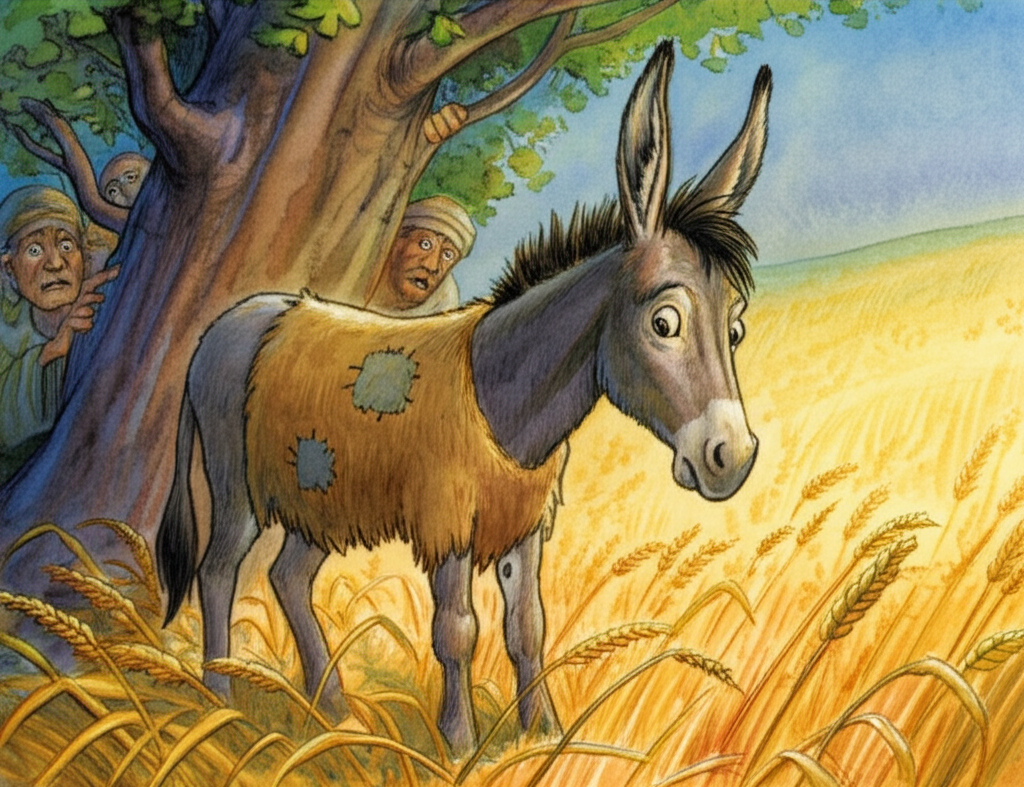
Whenever he stopped, he would put a lion’s skin on the donkey and let him loose in the fields of rice and barley. The people guarding the fields would see the donkey, but because he looked like a lion, they were too scared to go near him!
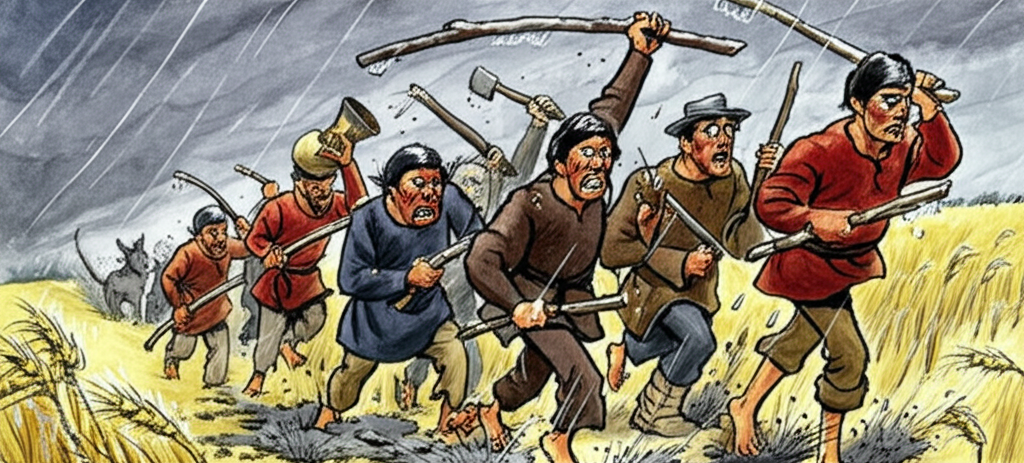
One day, the salesman stopped in a village. While he was waiting for his breakfast to cook, he dressed the donkey in the lion’s skin and turned him loose in a field of barley. The field guards were frightened and ran home to tell everyone. Soon, all the villagers came running with sticks and tools! They blew horns and banged on drums as they got closer to the field and shouted loudly. The donkey was so scared that he made a sound – he brayed like a donkey!
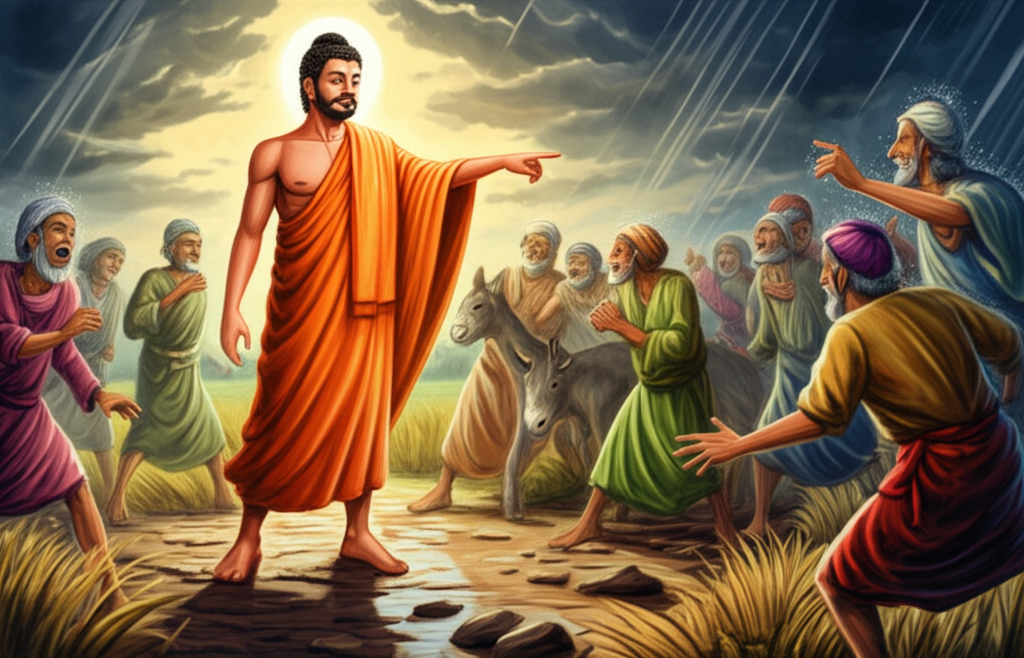
Then the future Buddha, who was also there, said this:
“That’s not a lion’s roar we hear, Or a tiger’s, or a panther’s might; It’s just a donkey in disguise, Braying with all his silly might!”
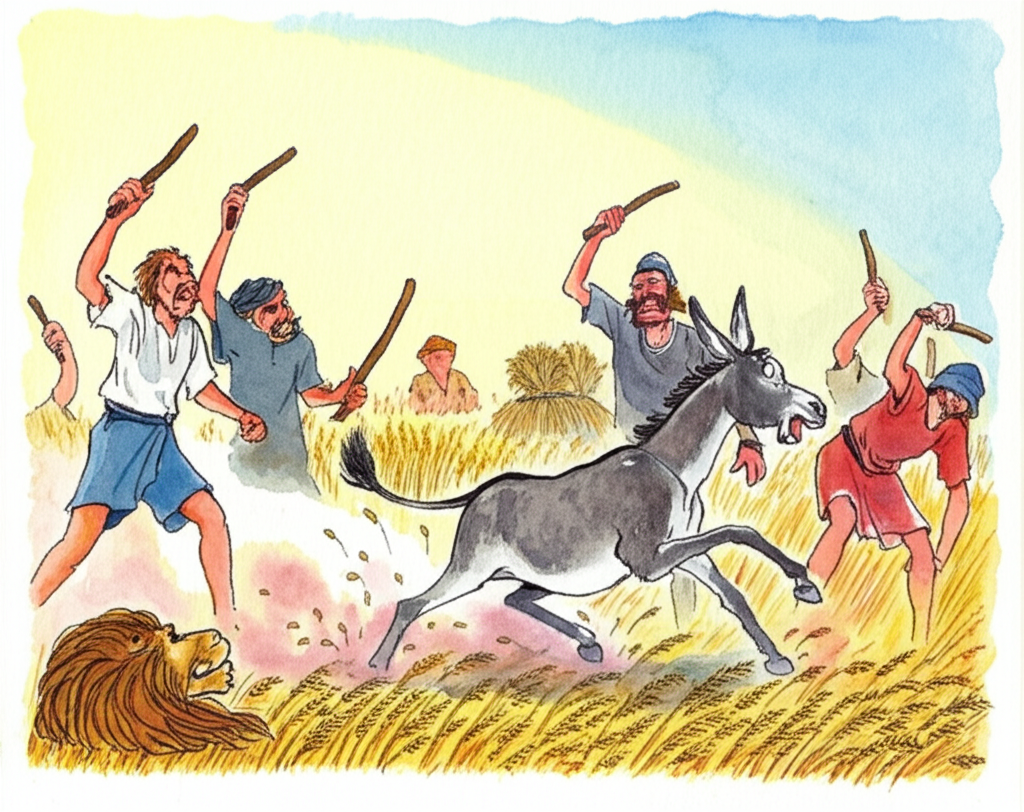
Once the villagers knew it was just a donkey, they got very angry. They chased him and hit him until he was badly hurt. They took the lion’s skin and went home.
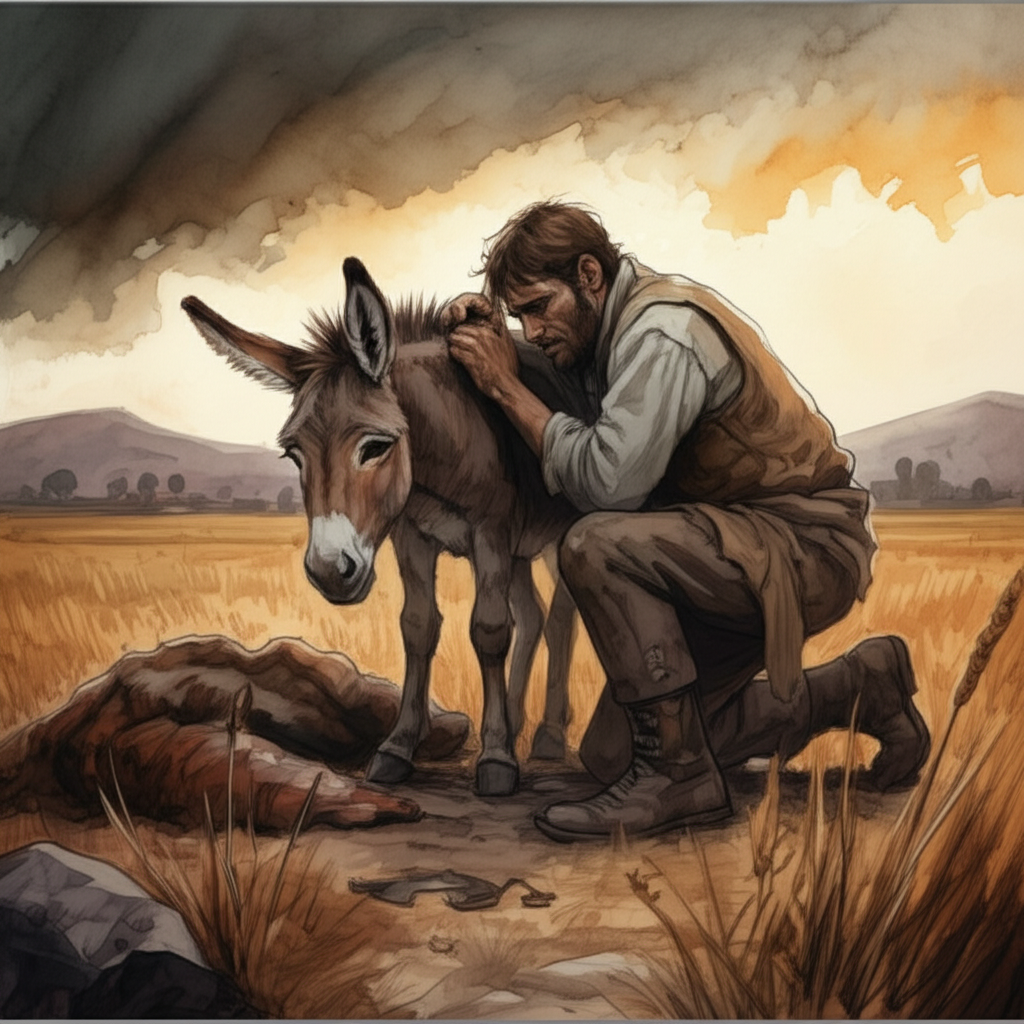
Then the salesman came back and saw his poor donkey lying on the ground. He said:
“The donkey might have eaten well, Dressed as a lion, big and bold. But he brayed! What a silly thing! That’s the moment his story was told.”
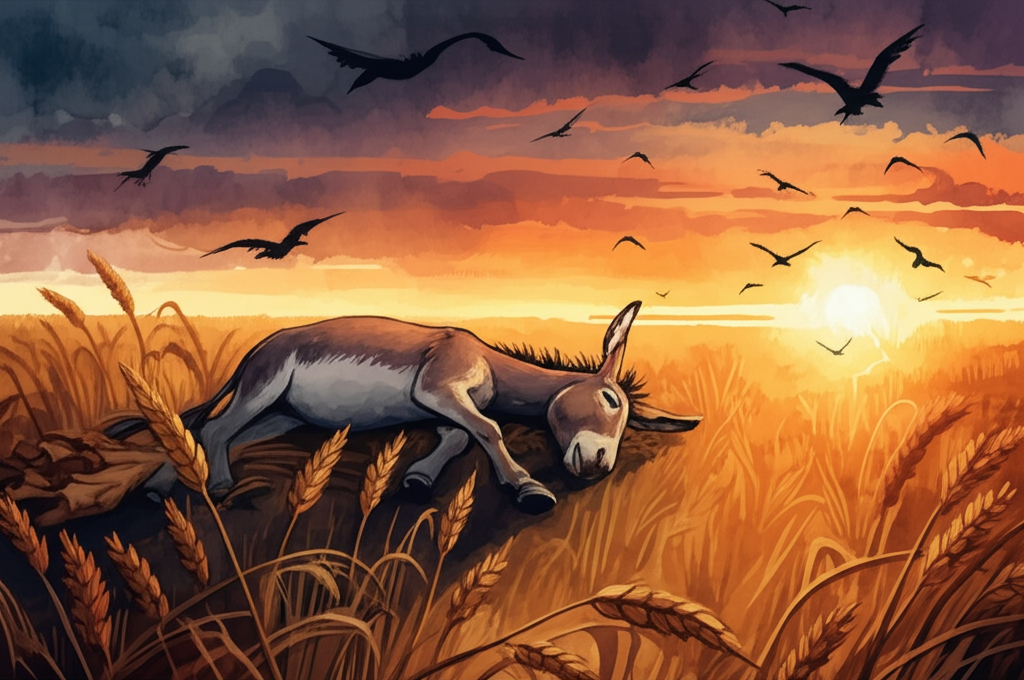
And as the salesman was saying those words, the poor donkey died right there in the field!